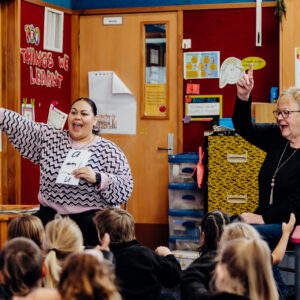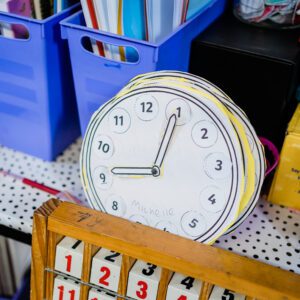In one survey representing around 20 percent of Aotearoa schools, 92 percent said they had a physical library space – although what that means in practice varies. They could be multimedia learning hubs with a team of library staff, or a cupboard of books managed by a teacher and volunteers – or anything in between.
Given school funding pressures, it can be hard to prioritise the library. Yet schools with librarians have better student reading levels, according to international research.
A comprehensive survey undertaken by the National Library, the Library and Information Association of New Zealand Aotearoa (LIANZA) and the School Library Association of New Zealand Aotearoa (SLANZA) identified “a widely held view that the school library has an important part to play in supporting literacy development for students, learning across the curriculum, and student wellbeing.”

At Tamahere Model Country School, south of Hamilton, the library is literally at its centre. Books have been moved from a dark, ministry prefab into the renovated, historically listed, original classroom “to make more space for our 7,500 precious books.”
“Our librarian is energetic and passionate and helps to ignite and build on the love of reading and learning,” says principal Waveney Parker. “Our reading results reflect this and the Education Review Office (ERO) used our school as a case study in 2017, acknowledging our library and librarian as significant influences.”
Parker says all the teachers and students love their very special library and librarian and would not want to be without them. “We value them and prioritise [them] in our tight budget.”
The librarian herself, Theresa Kewish, credits excellent two-way communication between the teachers and herself when it comes to the library supporting literacy development. “I have no problem communicating the library’s needs or advocating the library’s services to students, staff, parents and school management.”
She uses the school’s annual “booklet” to identify topics that are coming up, in order to get resources in ahead of time. She likes to “move along with the curriculum” by, for example, adding material on resilience and coding. Each class visits the library to be read to every week, and Kewish is aware of the struggling and reluctant readers, as well as the bookworms.

She believes there is a book or series for every child. “I tell them if they don’t like a book, to put it aside and we’ll find another option – there is a book out there for everyone, we just haven’t found yours yet! We provide books and topics that reluctant readers want to read. It’s ‘promote, promote, promote’ – making reading and the library fun, investing in graphic novels, discussing books as much as you can.”
“I tell them if they don’t like a book
… we’ll find another option – there is a book out there for everyone”
It’s not always entirely about the books themselves, though. Kewish says it’s also “caring about children, being genuine and making the library an interesting place to be – making displays and changing them regularly, doing reading advisories, making bright posters promoting books and genres.”
There are year-level sets of read-aloud books, complete with teacher notes, and visits from children’s authors – most recently, Des Hunt and Kat Merewether. Recent hit books include New Zealander James Russell’s “Dragon Brothers” series and Australian Jessica Townsend’s “Nevermoor” series.
Kewish also runs various programmes and activities during her 22-hour week, including Steps to Literacy and the Scholastic Book Fair. The annual Book Week features various promotions and competitions, including Dress Up as a Book Character Day.
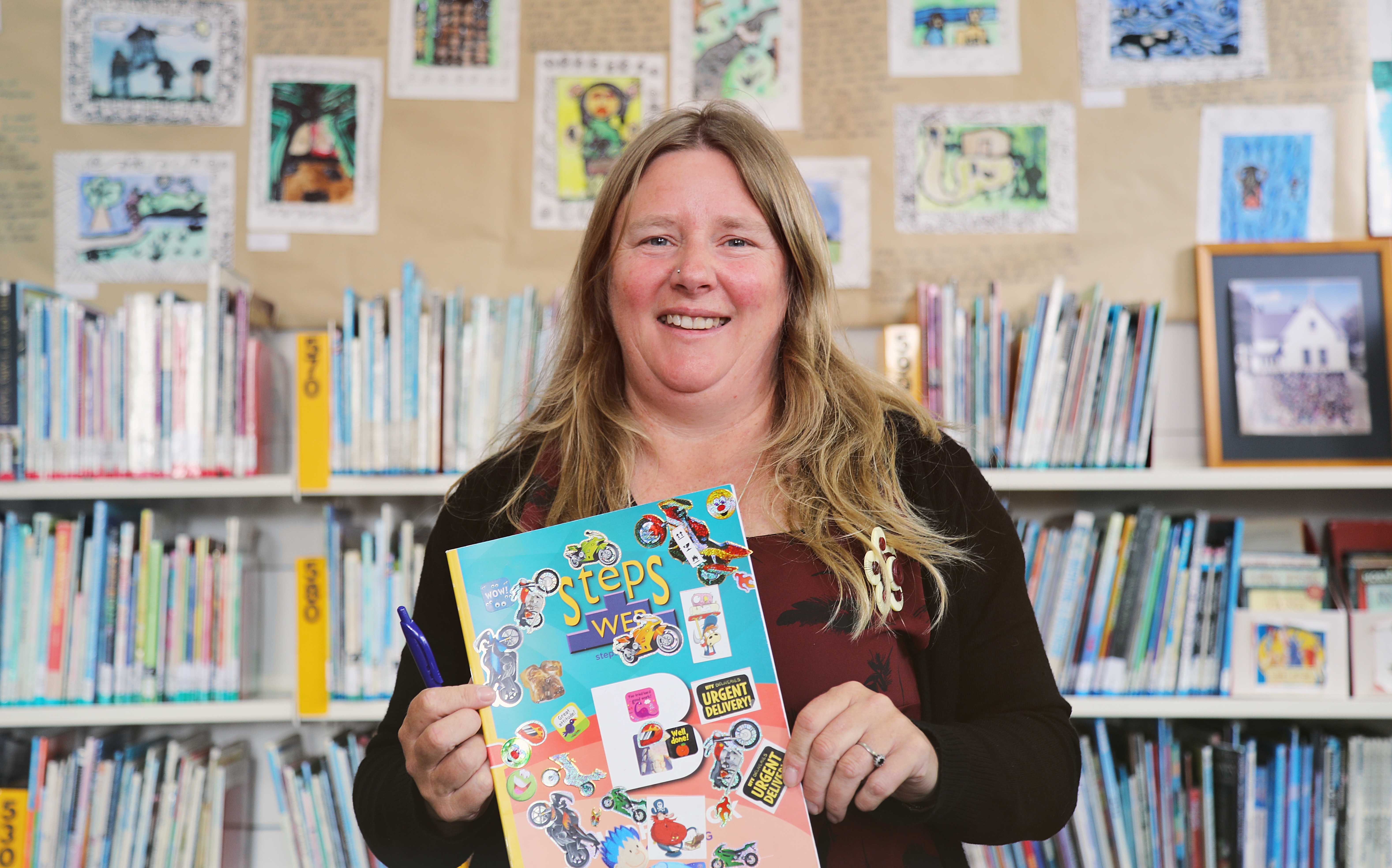
She acknowledges the importance of the community in promoting reading and literacy. Every week, local early childhood services (ECEs) visit the school library. A community volunteer repairs books, and Kewish organises student librarians and teacher volunteers to keep the library open and running when she’s not there.
North of Hamilton city, at Te Totara Primary School, librarian Michelle Simms has also set up a system that sees a team of student librarians and shelf monitors, about 80 children in any one year, working with books.
“From the student librarians, we choose five head student librarians, who are responsible for training and monitoring the shelf monitors. There’s a lot of demand to be a student librarian, often from bookish types, but also those who want to use the scanner and be in charge.”
Simms works closely with teaching staff. “The principal provides me with the curriculum coverage and contexts for the year. As the school loan coordinator for the National Library’s lending service, I also touch base with team leaders about their needs for each term,” she says. “Staff recommend books to me to buy that they’ve seen promoted, or that are their favourites, and I make displays in the staffroom of relevant books from our library.”
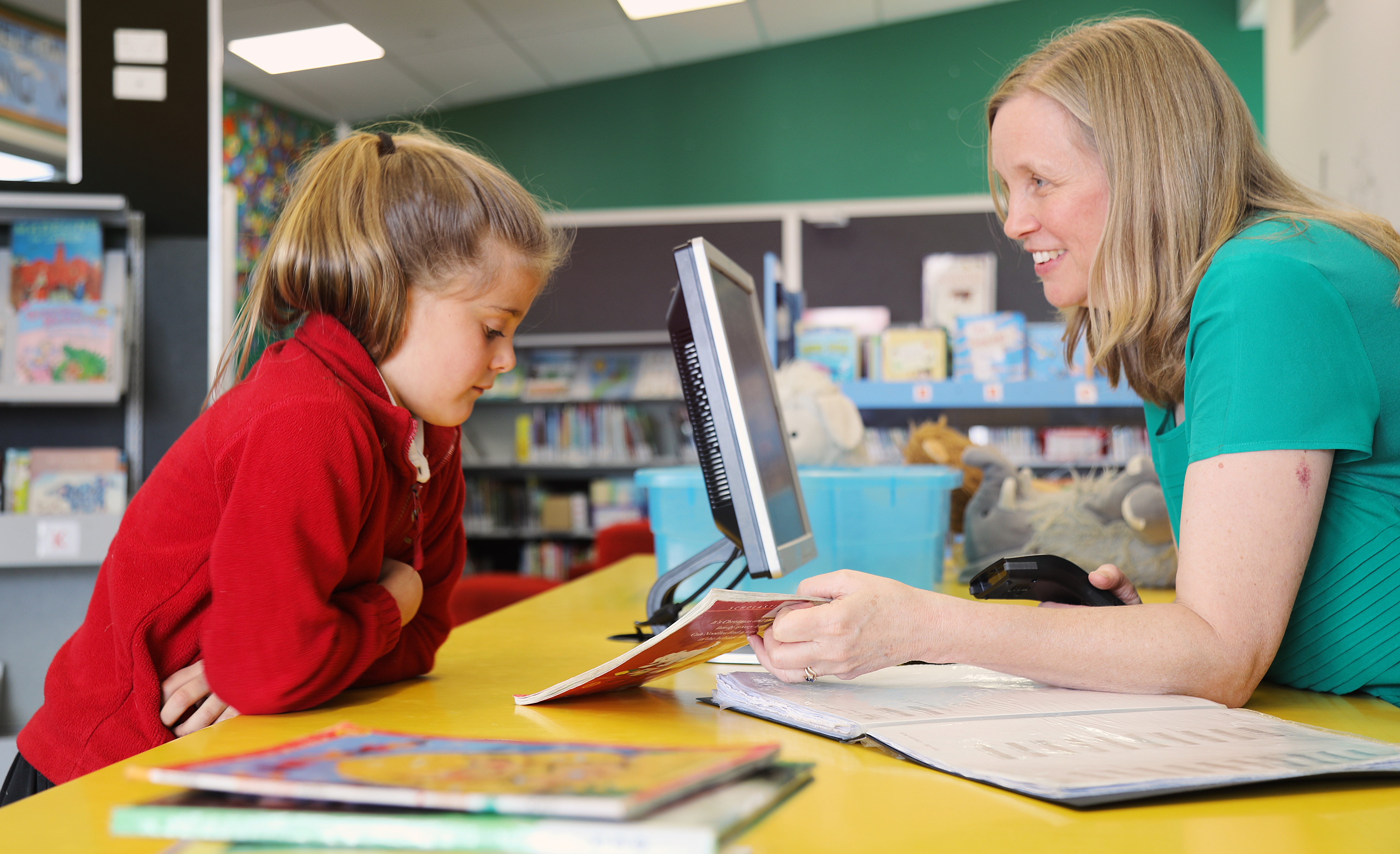
The school has a Patron of Reading, the author Dawn McMillan, and Simms runs Teachers’ Reading Groups. Both these initiatives stem from an NZEI scholarship that she used to travel to the United Kingdom to learn about reading initiatives there.
Simms is a big fan of graphic novels, particularly for children who have difficulty reading. “Everybody is reading graphic novels, so struggling readers don’t have to worry about reading something that is different from everyone else – though it’s useful to have an article up your sleeve about how worthy graphic novels are, for teachers and students who don’t see them as ‘real’ reading!”
Audiobooks and e-books also help struggling readers, particularly ones that allow students to make the font bigger and change the colour of the background.
“These kinds of books give anonymity to students so they can read ‘younger’ books without being embarrassed,” says Simms. This kind of thinking helps create a diverse and inclusive collection in the library.
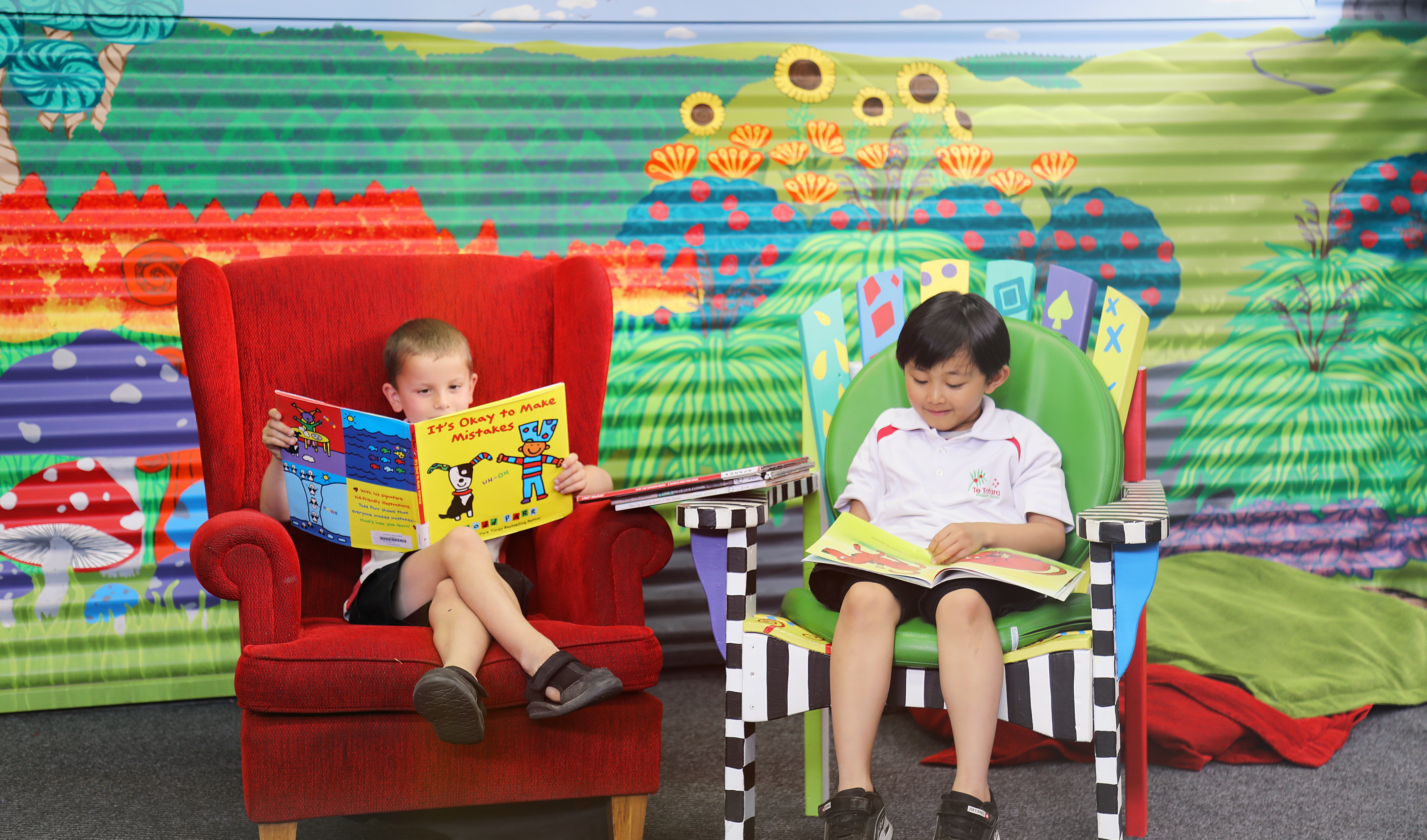
“There are also highly illustrated series, like ‘Tom Gates’ [a series by Liz Pichon] or ‘Big Nate’ [a comic strip series by Lincoln Peirce], or books specifically created for dyslexic children, like those published by Barrington Stoke.” Simms puts these in their own section, under the title “Easy on the Eye”.
Simms says one of the barriers to building an inclusive collection is being able to easily locate the books on site. “The Dewey system leads to books on Māori language and culture being shelved in separate places.” So she is creating a section that brings these books together.
“The benefit of an inclusive collection is that children see themselves. An Indian student this week held up The Night Diary by Veera Hiranandani, a historical fiction book about the partition of India, and said, ‘This is the best book I have ever read.’”
An inclusive collection is also helpful for parents. “I had a mother come in and ask for books with children with autism in them, for her son,” says Simms. “I printed a list from our catalogue, and she was really happy.”
Simms adds: “An inclusive collection [also] means that children are exposed to, and get insight into, other cultures and ways of life.”
“An inclusive collection means
that children are exposed to …
other cultures and ways of life”

School libraries can be vital to families who are at a distance from the nearest public library. At Massey Primary School, in Auckland’s northwest, a survey found that less than a third of families had a public library card. The school responded by setting up a library bus programme. It also invited a local playgroup to meet at the school’s library, and as a result, several parents have become regular borrowers.
“It has taught [young children] to value and enjoy books, and research shows that [reading] creates better bonding between parent and child,” says librarian Nova Gibson.
Gibson has offered 11 local ECEs a box of books each as “pop-up libraries”, using books she has personally sourced – and checked for quality – from local op-shops and donations. Parents are invited to borrow books to read to their children and then swap them for another one. “I don’t expect staff to police the books coming back – but encourage them to let me know if they run low and I top up the box.”
There are another 15 centres with a fridge full of books at their front gate, thanks to Gibson. These are used for wider community book swaps. There’s also a book swap fridge in her own school library, from which she gives books to children who are chronic losers of books.
There’s a summer reading programme planned, too, in conjunction with public libraries and school libraries from throughout Massey Primary’s Community of Learning.
Gibson is passionate about books being accessible to busy families, and about books reflecting children’s experiences. “One young boy was so excited about Tongan books when I displayed them for Tongan Language Week. Two sisters, recently arrived from South Africa, follow me into the library at about 7.30am and I’ve been able to talk with them and show them books about their country,” she says.
“If children find a book they identify with, it’s a starting point for a conversation. They feel safe, included and valued until they’ve made friends and feel more secure in the playground.”


